The triple bean stitch in embroidery is a distinctive and versatile technique known for creating bold and defined lines in needlework.
Comprising three parallel stitches forming a single line, it stands out for its visual impact and versatility in design.
Also recognized as a triple straight stitch, this embroidery method is characterized by its simplicity and durability.
The triple bean stitch is often favored for outlining shapes, adding intricate details, and contributing to the overall texture of an embroidery project.
Whether used by beginners or seasoned embroiderers, this stitch brings a unique design quality, making it a popular choice in textile artistry.
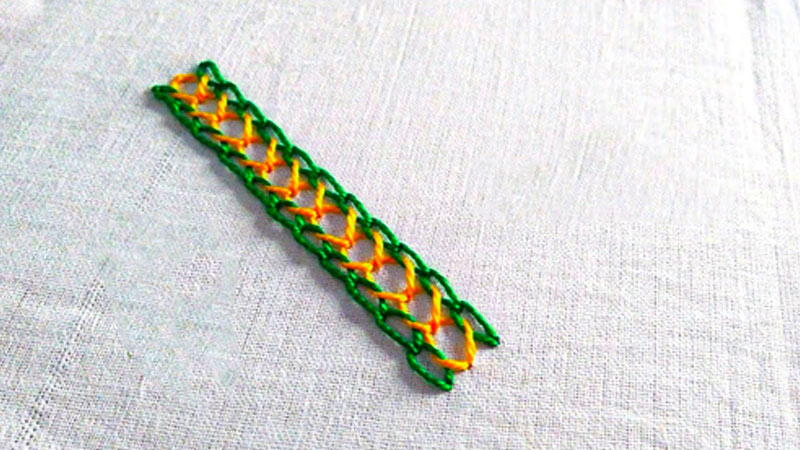
What Is a Triple Bean Stitch in Embroidery?
A triple bean stitch in embroidery is a technique where three parallel stitches are made to form a single, bold line. Also known as a triple straight stitch, it creates a thicker and more defined outline than a standard straight stitch.
To execute, one starts by bringing the needle up at the desired starting point, making three tiny stitches in the same place, and then repeating the process along the line.
The triple bean stitch is versatile, often used for outlining shapes, adding details, and creating visually impactful designs. Its simplicity and durability make it popular among both beginners and experienced embroiderers.
How Do You Execute a Triple Bean Stitch in Embroidery? Step-By-Step Guide
Executing a triple bean stitch in embroidery involves creating three parallel stitches in succession, forming a single line.
Here’s a step-by-step guide on how to execute a triple bean stitch:
Materials Needed
- Embroidery Hoop: To secure the fabric in place.
- Needle: Choose an embroidery needle suitable for your fabric.
- Embroidery Thread: Select the desired color for your stitch.
Step-by-Step Guide:
Prepare Your Fabric
Secure your fabric in the embroidery hoop, ensuring it is taut and smooth. This provides a stable foundation for your stitching.
Thread the Needle
Thread your embroidery needle with the desired embroidery thread. You can choose a single color or a combination of colors based on your design preferences.
Starting Point
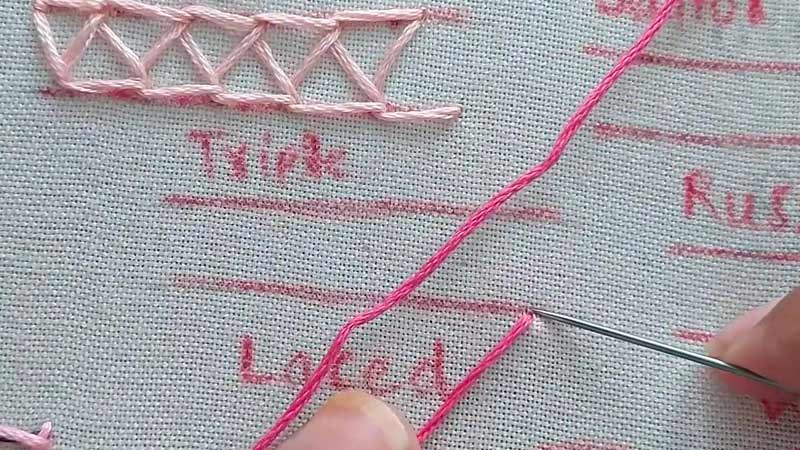
Bring the needle up from the back of the fabric at the starting point of the line you want to create with the triple bean stitch.
First Segment (Three Stitches)
Make three tiny stitches in the same place, going back and forth through the fabric. This action forms the first segment of the triple bean stitch.
Move Along the Line
Move your needle along the line to where you want to begin the next segment.
Second Segment (Three Stitches)

Bring the needle up from the back of the fabric at the new point and repeat the process of making three stitches in the same place. This forms the second segment.
Continue Stitching
Repeat steps 5 and 6, making segments of three stitches each until you reach the end of your desired line. Adjust the length and spacing of the stitches based on your design.
Secure the Thread
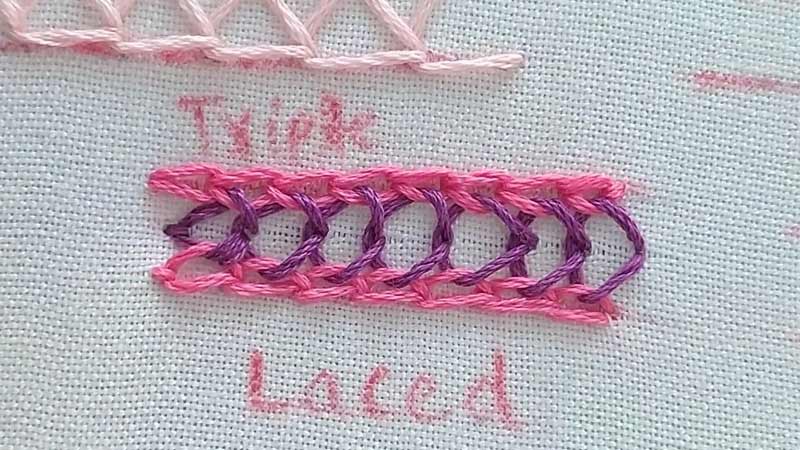
Once the line is complete, secure your thread. You can do this by making a small knot at the back of the fabric or by weaving the thread through some existing stitches to prevent unraveling.
Why Choose the Triple Bean Stitch in Embroidery? Understanding Its Advantages
Choosing the triple bean stitch in embroidery can be advantageous for several reasons, and the decision to use this stitch often depends on the embroiderer’s specific goals and aesthetic preferences.
Here are some reasons why one might choose the triple bean stitch in embroidery:
Bold and Defined Lines
The triple bean stitch creates bold and well-defined lines. If you want your embroidery design to have a prominent and eye-catching outline, the triple bean stitch is an excellent choice.
Durability
The triple bean stitch consists of three parallel stitches, making it more durable and less prone to unraveling compared to certain other stitches. This durability is especially valuable for embroidery that will undergo regular handling or wear.
Textured and Dimensional Effects
When used to fill in spaces, the triple bean stitch can contribute to a textured and dimensional appearance. This adds visual interest and depth to embroidery designs, making them more dynamic and engaging.
Versatility
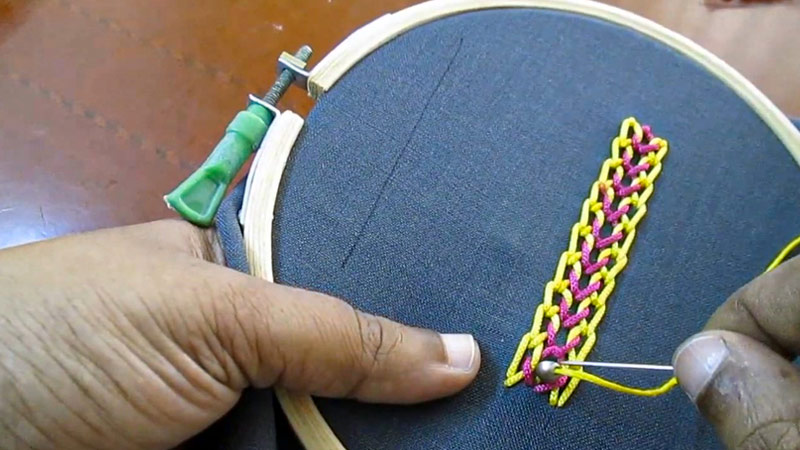
This stitch is versatile and can be used for various purposes in embroidery. It can be applied to outline shapes, fill in spaces, or add intricate details to designs, providing flexibility for different creative applications.
Decorative Possibilities
The triple bean stitch offers opportunities for creativity and decoration. By varying the segments’ length, direction, or color, embroiderers can create exciting and decorative effects within their designs.
Typography and Lettering
The stitch is particularly effective for outlining letters or words in embroidery projects. It contributes to simple and elegant typography designs, enhancing the visual appeal of text-based elements.
Playful Styles and Patterns
Embroiderers can use the triple bean stitch to create patterns like stripes, dots, or zigzags. This adds a playful and stylish element to embroidery, allowing for diverse design possibilities.
Customization with Color
The use of different colors for each segment of the triple bean stitch can add vibrancy and customization to the embroidery. This flexibility allows for a wide range of color combinations and effects.
Ease of Learning
The triple bean stitch is relatively simple to learn, making it accessible for embroiderers of varying skill levels. It is an excellent stitch for beginners looking to enhance their embroidery skills.
Effective Outlining
The stitch effectively outlines shapes, whether floral elements, animals, or geometric designs. It gives a clear and defined border to various elements in the embroidery.
Inspiring Examples of Triple Bean Stitch in Embroidery Projects
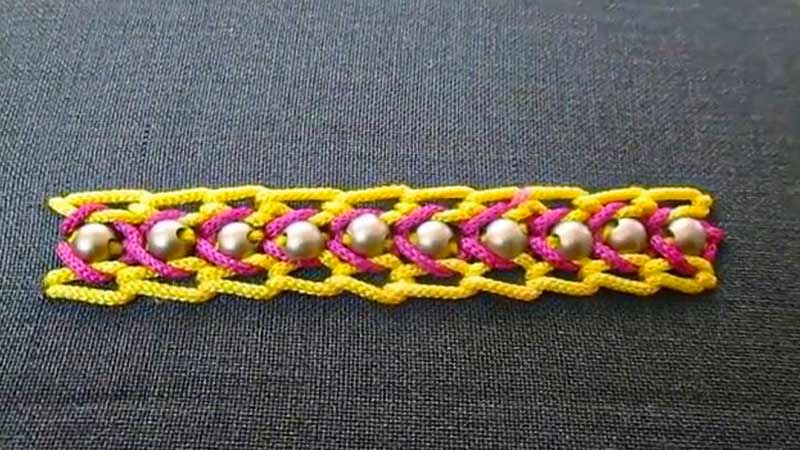
The triple bean stitch is a versatile embroidery technique that can be applied in various creative ways.
Here are examples of how the triple bean stitch has been used in different embroidery projects:
Nature-Inspired Design
Create a nature-themed embroidery piece with a triple bean stitch to outline intricate leaves, branches, and flowers. The stitch adds a layer of texture and dimension to the botanical elements.
Whimsical Animal Motifs
Use the triple bean stitch to outline and fill in whimsical animal designs. This can include creatures like owls, rabbits, or fantasy animals, adding a playful and charming touch to the embroidery.
Custom Typography
Craft personalized items with custom typography using the triple bean stitch. Outline names, quotes, or particular messages to create unique and meaningful embroidered pieces.
Geometric Patterns
Experiment with geometric shapes and patterns using the triple bean stitch. Create visually exciting designs with triangles, squares, or hexagons outlined and filled in using this stitch.
Bold Floral Bouquets
Enhance floral arrangements by using the triple bean stitch to outline and fill in bold and vibrant flowers. This technique adds a dynamic and textured quality to the bouquet.
Abstract Art
Explore abstract embroidery art with the triple bean stitch. Create freeform shapes, swirls, and lines to develop visually intriguing and unique embroidered abstract pieces.
Detailed Insects and Bugs
Craft detailed insects and bugs using the triple bean stitch for outlining wings, antennae, and body segments. This adds a realistic and intricate touch to insect-themed embroidery.
Holiday and Seasonal Designs
Design holiday-themed or seasonal embroidery pieces with the triple bean stitch. Outline festive motifs like snowflakes, hearts, or pumpkins to capture the spirit of different occasions.
Whimsical Landscapes
Create whimsical and imaginative landscapes using the triple bean stitch for outlining hills, trees, and clouds. This technique can contribute to a dreamy and unbelievable atmosphere.
Contemporary Textile Art
Incorporate the triple bean stitch into contemporary textile art pieces. Play with colors, textures, and shapes to produce modern, visually striking embroidered artwork.
Monogrammed Items
Personalize items such as towels, handkerchiefs, or pillowcases with monograms outlined using the triple bean stitch. This adds a touch of elegance and sophistication to the embroidered monogram.
Vintage-Inspired Embellishments
Use the triple bean stitch to create vintage-inspired embellishments, such as swirls, flourishes, or intricate borders, reminiscent of traditional embroidery styles.
FAQs
Can beginners use the triple bean stitch?
Yes, the stitch is relatively simple, making it suitable for beginners looking to enhance their embroidery skills.
Is the triple bean stitch suitable for intricate designs?
Yes, the triple bean stitch is versatile and can be used for simple and intricate designs, providing a bold and defined look to various elements.
Can the triple bean stitch be combined with other embroidery stitches?
Absolutely! The triple bean stitch can be paired with other stitches to create unique textures and visual effects, offering endless possibilities for creative combinations.
Are there variations in the length or spacing of the triple bean stitches?
Yes, adjusting the length or spacing of the stitches can create different visual effects. Experimenting with these variations adds diversity to the overall appearance of the embroidery.
Can the triple bean stitch be used for 3D embroidery effects?
While primarily a surface stitch, combining the triple bean stitch with padding techniques can contribute to creating raised or 3D effects in specific embroidery designs.
To Recap
The triple bean stitch emerges as a fundamental and impactful technique in embroidery. Its simplicity and the capacity to produce bold and well-defined lines render it a valuable tool for both novice and seasoned embroiderers alike.
The stitch’s versatility extends across various design applications, from outlining shapes to enhancing intricate details and textures within embroidery projects.
As a triple straight stitch, it adds durability and offers a creative canvas for exploring diverse visual effects.
With its unique ability to elevate the aesthetic appeal of needlework, the triple bean stitch is a testament to the enduring charm and adaptability of traditional embroidery techniques in contemporary textile artistry.
Leave a Reply